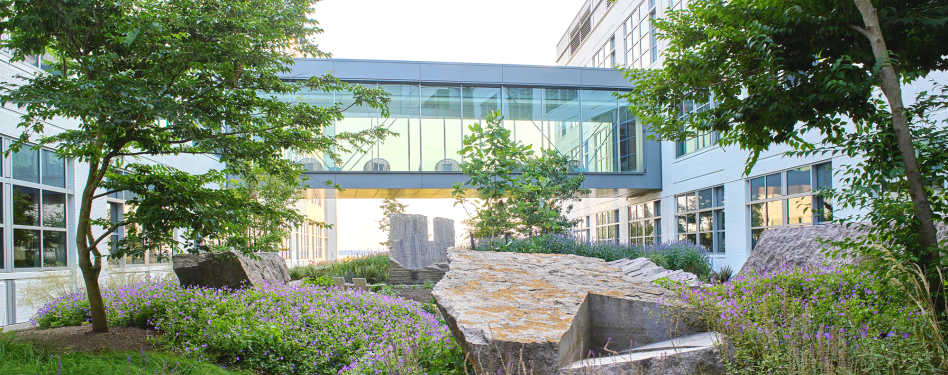
Feature image: The SITES Gold Expedia Group Headquarters Campus in Seattle. Photo courtesy of Marion Brenner.
Biodiversity is one of Earth’s most valuable assets—according to a report by the World Economic Forum more than 50% of global GDP, or $44 trillion in economic value, depends on natural resources. "Biodiversity" is a short form "biological diversity," referring to the variety of all living species and their ecosystems.
In recent years, increasing awareness of the importance of biodiversity to human health and success—and the threats to that equilibrium—have instigated commitments to transform the way we interact with nature. Responses to this call to action vary from the global, such as the historic Kunming-Montreal Global Biodiversity Framework, to the local and organizational.
As with all economic sectors, real estate depends on biodiversity and ecosystem services, such as clean air and water, urban heat island effect reduction, microclimates, resilience against natural disasters, and much more. Despite this, real estate is often driving the key threats to biodiversity: overexploitation of resources, habitat loss, climate change, invasive species and pollution.
However, this also presents an opportunity for the industry to identify strategies that integrate biodiversity into landscape design, construction and maintenance. USGBC's new resource, "Real Estate and Biodiversity: What You Need to Know," reviews the basic criteria and requirements that the built environment and specifically, the real estate sector, must address for the protection, conservation and enhancement of biodiversity. It also delves into the mitigation of impacts on biodiversity based on international guidelines and standards.
Using the LEED rating system for green buildings and the SITES rating system for sustainable landscape development, the industry has multiple resources that can guide this important work. Explore this pivotal moment in the evolution of the buildings industry and new opportunities to leverage the real estate sector for a flourishing, healthy and biodiverse planet.
